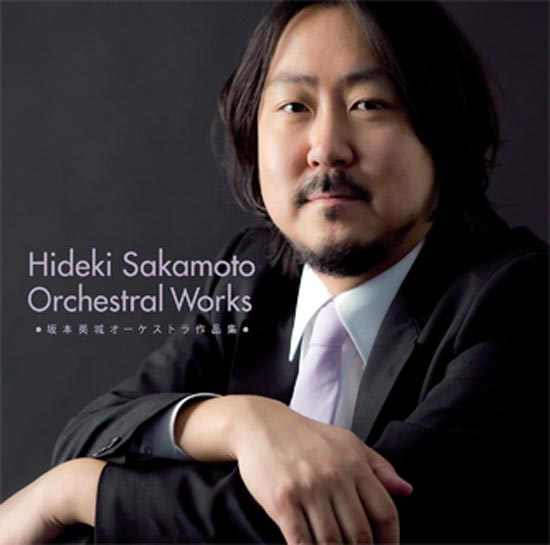Have we mentioned that we’re huge fans of Hideki Sakamoto’s work? He’s been featured numerous times on OSV, from his work on Yuusha no Kuse ni Namaikida 1&2 Giant Recital [2] to 100 Million Ton No Bara Bara [3] to his recent Guinness World Record-winning (for longest game music piece) score for echochrome ii [4]. And don’t forget about the crazy Noisycroak game composer roundtable [5] that he hosted some years back.
Back in March, however, we told you that Sakamoto would be traveling to St. Petersburg, Russia [6], to put on a live performance of his music from No Heroes Allowed! and the original echochrome. For most of us who were unable to attend the performance, Sakamoto has made a recording available through his in-house Noisycroak record label.
Brace yourself for an epic listening experience and check out our review after the jump.
I’ll start by saying I am completely unfamiliar with No Heroes Allowed!, but after hearing the music here, I am certainly interesting in learning more about it. The album opens with the epic and catchy theme from the game, “The World in my Palm.” The huge sound created by the St.-Petersburg State Academic Symphony Orchestra lets you know you’re in for something special right from the start, and the grand nature of this score was a great way to open the performance and this album.
This theme is followed by an intense 8-minute dungeon medley. Many of the segments here really struck a chord with me, making me even more curious to check out Sakamoto’s original compositions to see how they compare to his masterful full-orchestra arrangements. After a few bombastic militaristic pieces, it’s back to high fantasy with the final track from the game, “World to Come.”
It’s then on to his work from echochrome. While I loved his score for echochrome ii [4], I never had the opportunity to check out the first game’s soundtrack. Whereas the second game featured one massive 75-minute piece of music, the first game sported smaller individual tracks. More strange, however, is the fact that while echochrome ii was generally upbeat and lighthearted, the original echochrome covers much more emotional territory, reminding me often of Koichi Sugiyama’s Symphonic Suite Dragon Quest albums.
“prime #3 ~ prime #7,” for example, goes from melancholy and mysterious to upbeat and energetic, more in the style of echochrome ii. On the topic of the former, more moody sound, “prime #313” is foreboding and full of danger like a dungeon theme, sounding like something off of the Actraiser Synphonic Suite album, while “prime #919” sports intense strings and brass, coming off as a battle theme of sorts with explosive crash cymbals and percussion.
But it’s not all dark. “prime #101” is both airy and majestic, as if taking flight, whereas “prime #19” is a playful march with some impressive woodwind work. Next, “prime #61” takes on a grandiose yet whimsical sound that had my wife asking me, “Is this from a Disney film?” Maybe more like Kingdom Hearts, perhaps. My favorite track on the album is the lovely baroque waltz, “prime #59,” which is a true masterpiece. Rounding out the album are the triumphant “prime #233” with a reflective melody and “prime #9973,” which comes off as a requiem of sorts, adding in choral singing to close out the album.
But wait! In what I can only imagine was an encore, echochrome ii makes an appearance with what’s called “prime #4507 (birth – 5 years old),” encompassing the first two sections of the massive 75-minute piece. This includes the lighthearted opening section as well as the waltz, and gives at least me, who never experienced the first game’s soundtrack, an opportunity to hear exactly what the addition of an entire orchestra has done for this music. It’s a nice treat, although I wish Sakamoto had included my favorite segment of the piece that comes in at around the 10-minute mark.
Still, I can’t help but be amazed once again. While echochrome ii featured a string quartet and Sakamoto himself on piano, the time and work that has gone into creating these arrangements for a full orchestra has yielded even more impressive results, reaffirming my appreciation for Hideki Sakamoto’s talent. Knowing what Sakamoto is capable of both in terms of arrangement and composition, this album leaves me wanting more from these amazing pieces, as I know they could be fleshed out into something more lengthy and substantial. I’m surprised by the difference in style from his more lighthearted work on echochrome ii, but no doubt the entire orchestra being involved with this recorded lends a new majestic and grandiose air to his echochrome pieces.
The album features images of Sakamoto dressed up fancily in a suit along with a lengthy biography, a list of his special followers on Twitter, and extensive orchestra credits. The album is being distributed by Amazon and SuperSweep in Japan for 2,625 Yen, and it’s well worth tracking down for that price.
What do you think of Hideki Sakamoto’s career and this one-of-a-kind concert in St. Petersburg, Russia? Would you like to see more composers taking a chance on an experiment like this?
